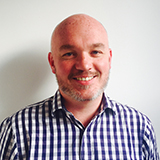 It was a rude awakening for me when a new registrar colleague exclaimed with glee: “your GMC number begins with a 6!”
It was a rude awakening for me when a new registrar colleague exclaimed with glee: “your GMC number begins with a 6!”
I hadn’t the heart to tell her that it’s actually a “61…” GMC number, and so there must have been around 100,000 doctors who qualified between my graduation day and hers. And so, you must understand, on any given day, I don’t feel very “junior.” With a Masters and PhD under my belt, as well as 11 years of work as a doctor, I wonder about the job title that is bandied about for so many of us: junior doctor.
Am I qualified? Yes.
Have I reached my CCT? No.
Have I learned a lot? Of course.
Have I much to learn? Always.
So where do I stand, two years from completion of training, but ever the “junior” doctor?
In clinic, in these months when we see patients whose appointments were rescheduled because of industrial action, I am often prompted with statements like: “I’m sure you weren’t part of the strikes, at your level.” Cue awkward conversation about the trials and tribulations of the Junior Doctors Contract, and immediate souring of the doctor patient relationship.
All junior doctors have worked hard to get to where they are, regardless of where on the career spectrum they may find themselves. And so many are not junior. Our nursing colleagues become nurses, not “junior” nurses. But their seniority is rewarded as the career ladder is climbed. In the specialist environment where I currently work, many of my colleagues from allied health professions are described as “highly specialist,” and so they are. But what of us? Even when we jump through the hoops of postgraduate exams and training, we retain our humble “junior” status until the bitter end.
In a recent guideline from NICE I read with interest that patients with sepsis should be assessed by a “senior clinical decision maker,” with the recommendation that, for adults, this should be someone “such as a doctor of grade CT3/ST3 or above or equivalent, such as an advanced nurse practitioner with antibiotic prescribing responsibilities.” It is disappointing that doctors pre-CT3/ST3 are not deemed to be appropriately skilled for this task, after 4-6 years at medical school, a two year foundation programme and possibly a few years as a core specialty trainee.
In the Republic of Ireland, when faced with the same issue, junior doctors became non-consultant hospital doctors, or NCHDs. This, indeed, is an accurate description, but if we adopted the same nomenclature in the UK, would we not be defining ourselves by what we are not, rather than what we are capable of?
In today’s NHS, the challenges of providing excellent clinical care, meeting targets, remaining courteous at all times and maintaining a work/life balance mean that there is scarce the energy to worry about what it says on our badges. And let us not forget, that to be a junior doctor during the last year has been a badge of honour, and has made so many of us feel like we are really part of something: something special.
I’m old enough not to have been an FY1/FY2, and hark back to the days of junior/senior house officers and registrars. To go back to this would make sense, since many still use these terms in everyday life. To be clear, we may be well qualified, and we may be skilled, but we are still subordinates. A name change, although desirable, must come from above, lest we seem precocious. The term “doctor,” surely, could be enough, as this is the esteemed vocation that we all aspired to as students of medicine. Perhaps the late, great Kate Granger had it right all along.
To put it simply: #hellomynameismichael.
Michael Moran is a Belfast born, London-based clinical lecturer and registrar in ENT surgery at UCL/UCLH, and is a member of the Royal College of Surgeons of Edinburgh Trainees’ Committee.
He is blogging in a personal capacity, and his views expressed are not those of the organisations to which he is affiliated.
